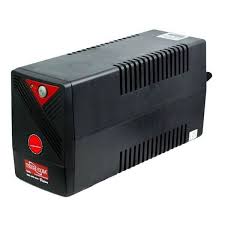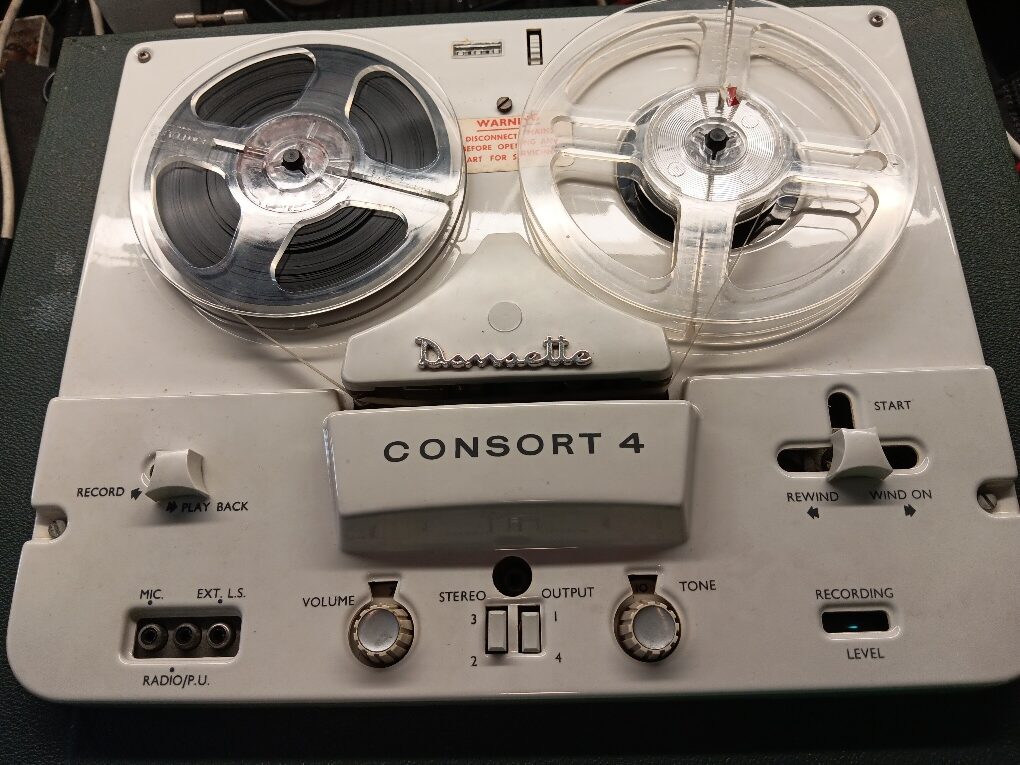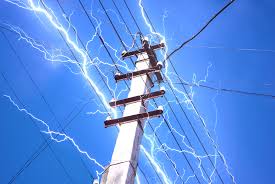
Cortes de energía o qué??!!! Tener un UPS, una fuente de alimentación ininterrumpida.
A todos nos gusta vivir en el campo., pequeños pueblos y ciudades, etc.. pero el inconveniente es que los enojados duendes eléctricos que utilizamos para accionar nuestros equipos eléctricos llegan principalmente a través de cables aéreos.. Todos estos pilones miran al cielo y exigen ser alcanzados por un rayo.. Agregar a esto, Los proveedores de la red eléctrica no pensarán en cambiar a diferentes partes del sistema de red, lo que provocará interrupciones momentáneas en el suministro de red., causando caos.
Los últimos meses han sido bastante malos en cuanto a problemas de cortes y cortes de energía. En los próximos meses veremos más cosas por venir.. Cuando hace mucho viento, Los cables aéreos pueden balancearse y tocarse., Los desechos pueden ser arrastrados a través de los conductores., provocando que los nodos de distribución local se apaguen y se vuelvan a conectar. Los rayos pueden causar todo tipo de problemas. Al menos, un rayo en cables aéreos “saturará” eléctricamente los transformadores de potencia, provocando un “apagón” de energía. es decir. un segundo más o menos sin electricidad. en el peor de los casos, Puede destruir todos los equipos de su propiedad.. La mayoría de las redes de torres están unidas en la parte superior con un cable llamado tierra longitudinal.. Este cable recorre la longitud de las rutas de los pilones.. La idea aquí es que si un rayo cae sobre un poste, La energía se descarga a tierra a través de muchas torres de alta tensión., a lo largo de decenas de kilómetros, minimizando el daño local.
Casi todos los equipos electrónicos que tenemos en casa tienen circuitos muy sensibles con más potencia informática que la que tenía todo el Reino Unido en la década de 1960.. Todo esto funciona a voltajes y corrientes muy bajos y puede confundirse o estropearse por un "pico" de energía.. Esto puede ser generado por un rayo local o por un mantenimiento de rutina en el mejor de los casos.. Veo muchos artículos del hogar que necesitan reparación como resultado de esto.. Sets de televisión, cajas de satélite, cajas IPTV, PC, enrutadores, frigoríficos, sistemas de sonido….continúa.
Si bien los rayos pueden destruir equipos, Los breves cortes de energía que tenemos también pueden causar daños reales al equipo.. La falla puede causar corrupción en el interior controlado por computadora., o dañar las fuentes de alimentación internas. Un SAI (fuente de poder ininterrumpible) puede ayudar a minimizar el daño.
¿Qué es una fuente de alimentación ininterrumpida?, UPS?
Se trata de una caja que se sitúa entre la toma de corriente de tu casa y el equipo a proteger.. Básicamente dos tipos; Fuera de línea. Este UPS en condiciones normales, Conecta tu equipo directamente a la corriente de tu casa., como si nada estuviera pasando. sin embargo, cuando ocurre un breve corte de energía, enciende rápidamente su batería interna que opera un circuito para proporcionar energía de red sintetizada a su equipo. El largo y el corto, todo lo que tengas conectado sigue funcionando sin problemas. El cambio dura unas décimas de segundo.. La mayoría de los equipos electrónicos., que está diseñado para cumplir con la aprobación CE, debe tolerar una pequeña interrupción en el suministro eléctrico. Cuando se restablece la energía normal, la caja te vuelve a conectar a la red eléctrica y luego recarga su batería lista para la próxima interrupción. alegre bueno. El otro tipo es ON LINE.. Aquí tenemos una unidad que proporciona energía sintetizada todo el tiempo., independientemente de los cortes de energía. A lo que estás conectado es no una red eléctrica de la red, pero suministro generado localmente. Proporciona un aislamiento mucho mayor entre usted y el mundo exterior de la red eléctrica.. Estos sistemas se ven favorecidos por los centros de datos, las redes de comunicaciones y las personas en máquinas de pulmón de acero.. Pero en serio, Tengo clientes que usan máquinas de diálisis en casa.. Estos sistemas UPS son 4 o 5 veces el precio del kit OFF LINE, tu elección.
Antes de comprar un UPS, hay algunas cosas que debes considerar. La cantidad de energía que necesitas para usar, la cantidad de tiempo que desea que el equipo funcione en caso de corte de energía y por último, El tipo de elementos que necesitas proteger..
El “requisito de energía” podría ser pequeño, 150 Vatios, para un televisor pequeño y un Sky Box, Caja de IPTV digamos. Un televisor OLED de gran tamaño, Los televisores de plasma más antiguos y otras cosas consumirían más energía. El “tiempo de ejecución” del UPS indica cuánto tiempo funcionará en caso de un corte de energía y está determinado por la capacidad de las baterías internas requeridas.. Otra cosa es cuánta energía se requiere cuando su equipo se inicia inicialmente., A esto lo llamamos corriente de irrupción.. Digamos que tienes un corte de luz y quieres encender tu equipo. El equipo exigirá algunos 3-6 veces más energía de la que consume cuando funciona normalmente, por una fracción de segundo. La mayoría de los UPS estándar se encargarán de eso.. sin embargo, Algunos artículos más grandes con fuentes de alimentación voluminosas, como los grandes sistemas de cine en casa, tendrán una demanda masiva, lo que puede causar que el UPS se apague. Se deben proteger elementos como los quemadores de pellets., pero estos requieren diferentes cantidades de energía dependiendo de su ciclo de trabajo. Asi que, Siempre recomiendo un SAI con mayor capacidad de lo normal. Siempre es mejor llamarme para pedir consejo..
Otras cosas a considerar al mirar un UPS, es el tipo de equipo que desea conectarle y qué tiene el equipo en su interior. Un ejemplo sería su sistema de calefacción con bombas eléctricas, etc.. A estos les gusta ver una onda sinusoidal limpia y agradable de poder. (la forma del suministro de energía que obtiene de la compañía eléctrica). Los UPS económicos tienden a generar una producción aproximada bastante tosca y pueden estresar las bombas con motor de inducción., haciéndolos tristes e infelices. La potencia nominal de un UPS normalmente se expresa en Watts y VA., ejemplo siendo 1000 Vatios – 650Virginia. Ahora voltios x amperios deberían ser iguales a vatios, pero debido al elemento reactivo del equipo conectado, hay una especie de perdida. No se preocupe, toma la figura inferior. Puedo ayudarte con todo lo anterior para guiarte hacia lo que necesitas.. Sólo dame un grito. O llama por teléfono si es más fácil.
Un par de cosas más que mencionaría relacionadas con su suministro eléctrico..
Solar
Mucha gente está instalando sistemas de energía solar.. España, por ley, tiene buen acceso al sol, entonces eso es bueno. Algunos clientes me han hablado sobre lo que sucede durante un corte de energía cuando tienen un sistema solar.. En términos generales, si tienes un sistema que no tiene una batería física configurada y la está usando para alimentar el proveedor de red para recargar su cuenta virtual y ahorrar dinero, ¿Debería tener un corte de energía?, el suministro de su casa se cortará. Esto se basa en normas que estipulan, con razón, que si el suministro de red a su casa se corta por mantenimiento, por ejemplo, usted debe no seguir proporcionando ese suministro. De este modo, no agotar al pobre ingeniero que trabaja 200 metros por la carretera. Consulte con su proveedor de sistemas solares y asegúrese de tener muy claro este asunto.. Si es importante para ti tener suministro eléctrico continuo, entonces es posible que se requiera un UPS adicional si lo desea.
Si tienes un sistema solar con baterías locales, que están cargados de flotación todo el tiempo, luego simplemente asegúrese de que su sistema le proporcione energía ininterrumpida durante un corte de energía local. Vuelva a consultar con el proveedor para ver qué tan rápido se activa el suministro de su equipo durante un corte de red.. Es posible que descubra que dura unos segundos.. Si es importante para ti tener suministro eléctrico continuo, entonces es posible que se requiera un UPS adicional si lo desea. La otra cosa a considerar al especificar su sistema solar, es la potencia nominal. Tiene paneles solares clasificados en digamos, 7 kilovatios. La mayor parte de la producción del panel se degradará a medida que aumente la temperatura.. en los días calurosos, es posible que su capacidad se reduzca en 30%. Paneles solares como días fríos, brillantes y claros.. Hay un límite en la cantidad que un sistema solar de propiedad privada puede retroalimentar a la red..
El otro tema que ahora es cada vez más preocupante es la diferencia variable en el voltaje de suministro de algunas viviendas.. Aunque nadie lo admitirá y ninguna empresa de energía solar con la que he hablado estará de acuerdo o siquiera se comunicará conmigo., Esto parece deberse al aumento de los sistemas solares que se alimentan de la red.. En una palabra, es así; Si tiene un sistema solar y se alimenta a la red, obtendrá una recompra., Lo hace obligando a la electricidad a regresar a la red.. Esto tiene el efecto de aumentar ligeramente el voltaje del suministro eléctrico.. Si vive en un grupo de propiedades con el mismo transformador, por ejemplo, y hay varios de ustedes con sistemas solares, todos tratando de forzar la entrada de energía a la red para ganar dinero., luego dependiendo de la configuración de la red, el voltaje de la red eléctrica puede llegar a ser preocupantemente alto. Un ejemplo típico es el suministro a mi propiedad.. en una noche fría, Podría tener un suministro de 210 Voltios. En un día soleado cuando las propiedades locales con paneles solares cobran vida, mi suministro puede ser tan alto como 265 Voltios. Esto está muy fuera de las tolerancias acordadas en la red y chocará contra una pared de ladrillos si intenta desafiar al proveedor de electricidad sobre este tema.. Muchos de los sistemas UPS que proporciono intentan atender estas variaciones., tratando de estabilizar una oferta de un valor nominal 230 Voltios. No es bueno tener un suministro superior al normal, ya que sobrecarga el equipo.. Un voltaje más bajo hará que los hornos, tostadoras, etc. para no calentarse lo suficiente. Puedo ver que este problema levanta la cabeza cada vez más.. he hablado con, lo que yo llamaría los proveedores de sistemas solares más profesionales y empresas de conexión certificadas autorizadas y extraoficiales, en realidad están de acuerdo conmigo. Básicamente, las redes en las zonas rurales no tienen la capacidad de devolver energía a la red.. Esta es una limitación de los transformadores y cableado más antiguos, entre otras cosas.. Estoy seguro de que veremos situaciones en las que varios sistemas solares se conectarán a fuentes de energía locales y no podrán retroalimentar individualmente suficiente energía para crear la recompra financiera que esperaba.. Esto se debe a la saturación de la red que menciono anteriormente.. Vea lo que su proveedor tiene que decir al respecto para su propia satisfacción.. Si estás interesado en leer más sobre esto., Puedes ver lo que el gobierno australiano tiene que decir..
Generadores
Reparo muchos equipos que han resultado dañados por estar conectados a grupos electrógenos.. Esto se refiere principalmente a personas que están totalmente "fuera de la red" y utilizan un generador como respaldo de los sistemas solares.. Su generador estándar está bien para suministrar luces y equipos básicos y otros equipos básicos.. Pero, la mayoría de los equipos electrónicos pueden verse afectados por la mala calidad y la producción inestable de un generador económico o uno en malas condiciones.. La energía de un generador puede fallar de dos maneras; 1. El voltaje de salida puede variar enormemente y, si es excesivo, provocará daños en las fuentes de alimentación electrónica de los televisores., etc ... 2. La frecuencia de la energía del generador debe ser lo más cercana posible a 50 Hz., ciclos por segundo, igual que la red eléctrica. sin embargo, Esto generalmente es una función de las RPM del motor del generador.. Cuando el generador arranca y se apaga, Esta frecuencia se desviará del objetivo y puede dañar los transformadores de potencia y las fuentes de alimentación conmutadas del equipo.. Asi que, Es importante encender la salida de su generador una vez que se haya iniciado y haya alcanzado la velocidad y apagar la salida antes de apagar el motor..
mientras garabatea, Es posible que le convenga instalarlo en su unidad de consumo., módulo con sobretensión / fusibles de seguridad actuales (PIC, interruptor de control de potencia). Estos ayudarán a proteger su hogar de sobretensiones, rayos y voltajes incorrectos cuando la compañía eléctrica. También vale la pena comprobar la integridad del suelo de su propiedad.. Cualquier electricista debería poder realizar una prueba de impedancia de tierra que determinará la presencia y calidad de su tierra de seguridad.. De nuevo, llamame y te puedo asesorar. Mantenerse seguro.
Llámame para discutir cualquier requisito que puedas tener..
Seth, Servicios zeta, trabajando duro...para ti.









Hola seth. Confío en que usted y su buena señora se encuentren bien.. Hace algún tiempo mencioné que me gustaría garantizar la continuidad del suministro eléctrico al televisor., IPTV, enrutador y palo de fuego(Barra de sonido aún por comprar)durante un corte de energía. Además, un UPS separado para el quemador de pellets según las diferentes necesidades de ubicación y energía.. Me preguntaba si podría decirme cuáles serían sus sugerencias para ambos y dónde podría ubicarlas.. Muchas gracias desde ya. Steve Cruz